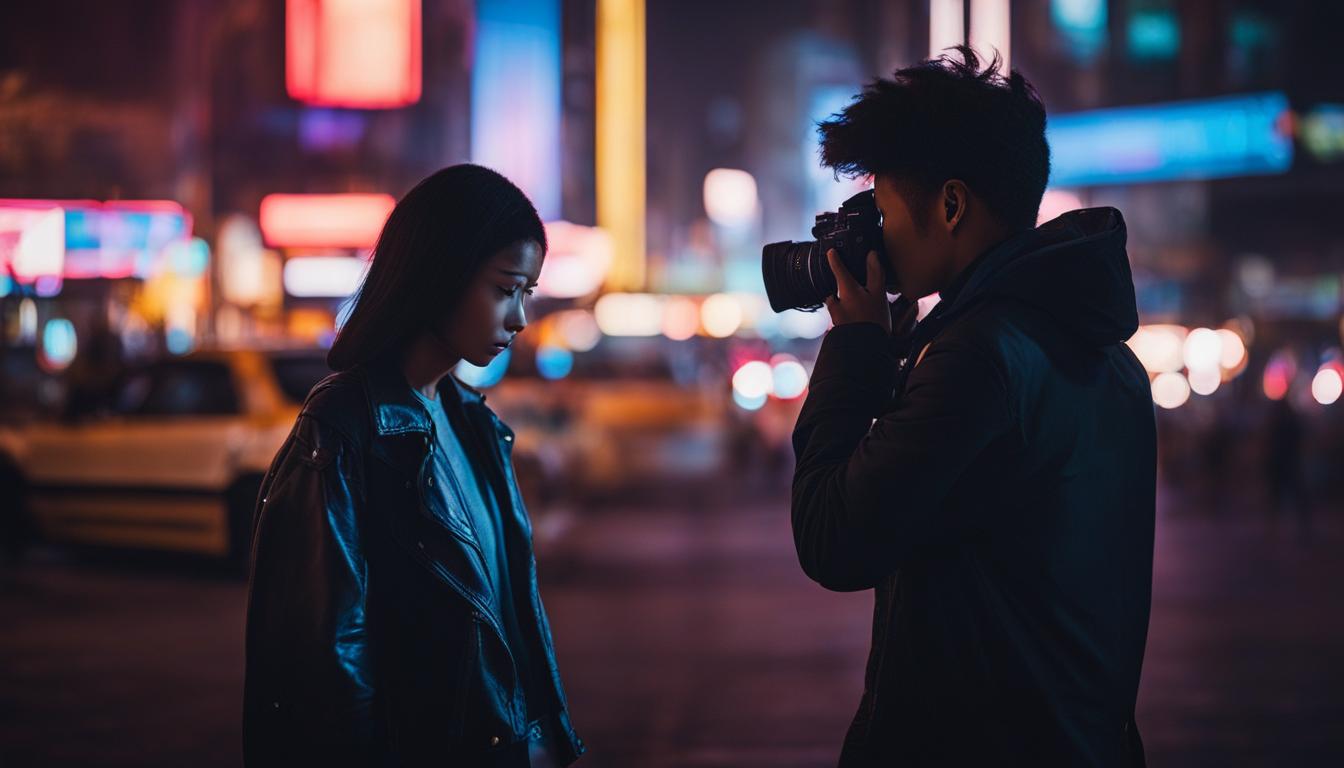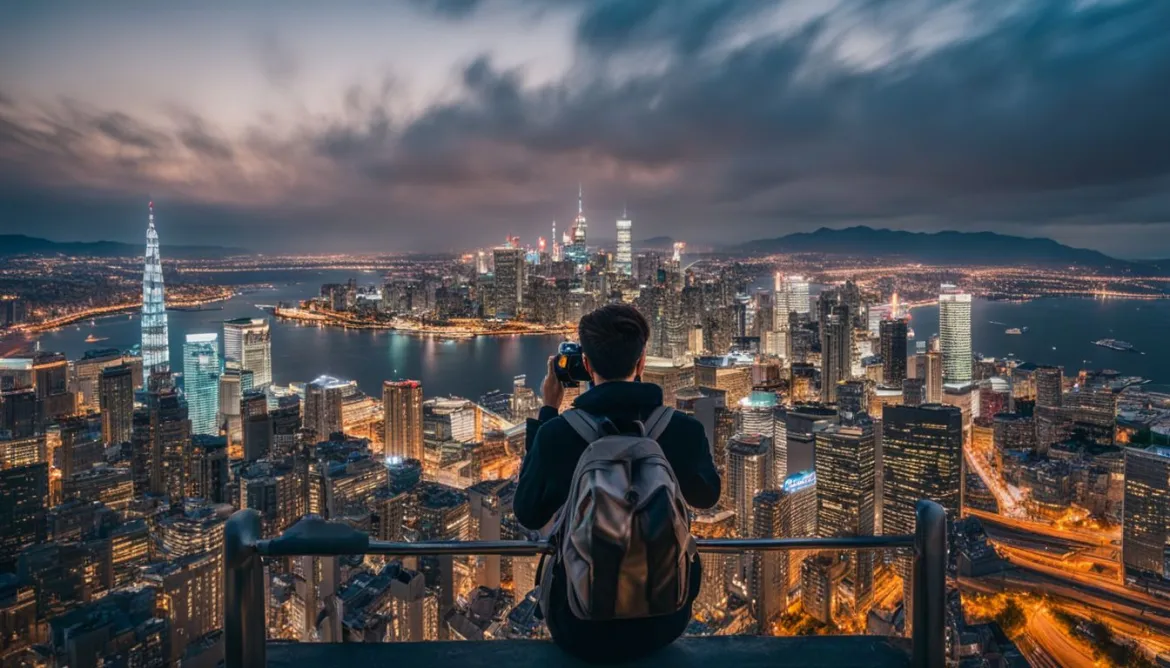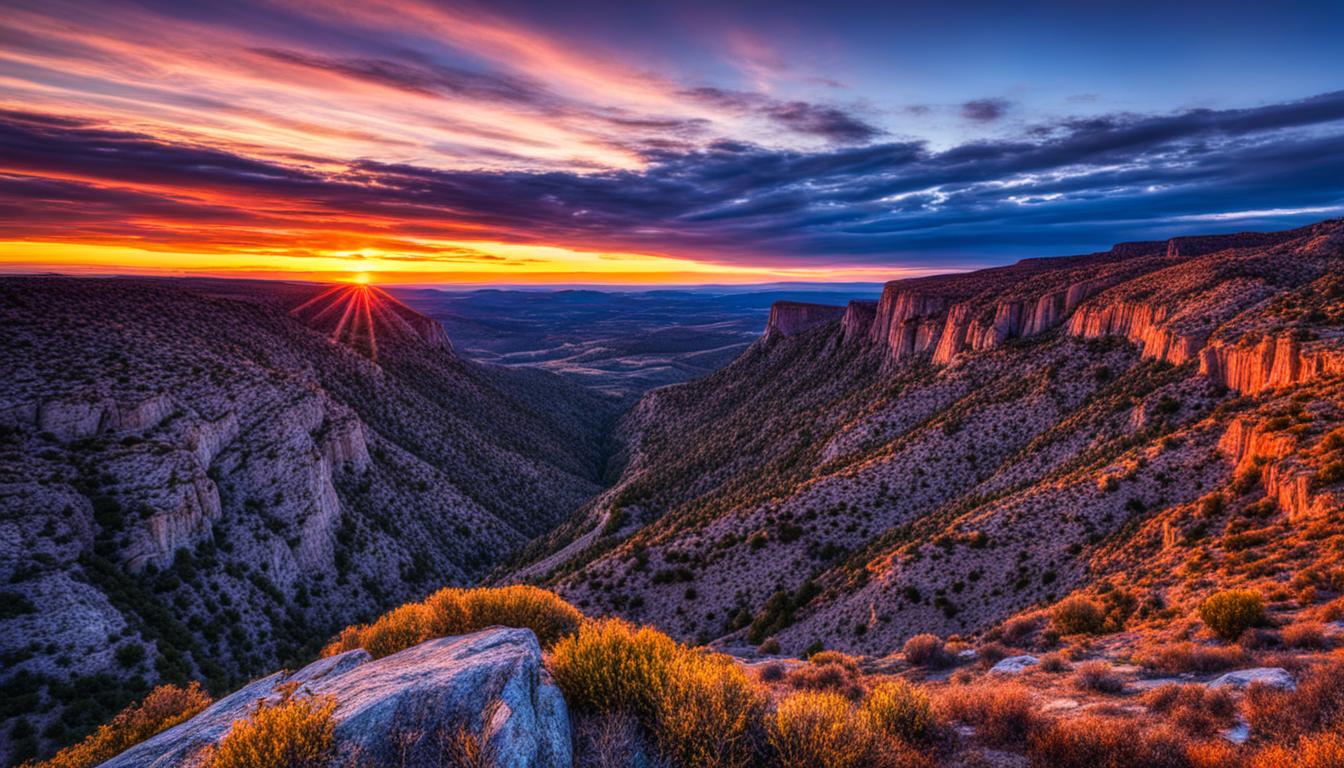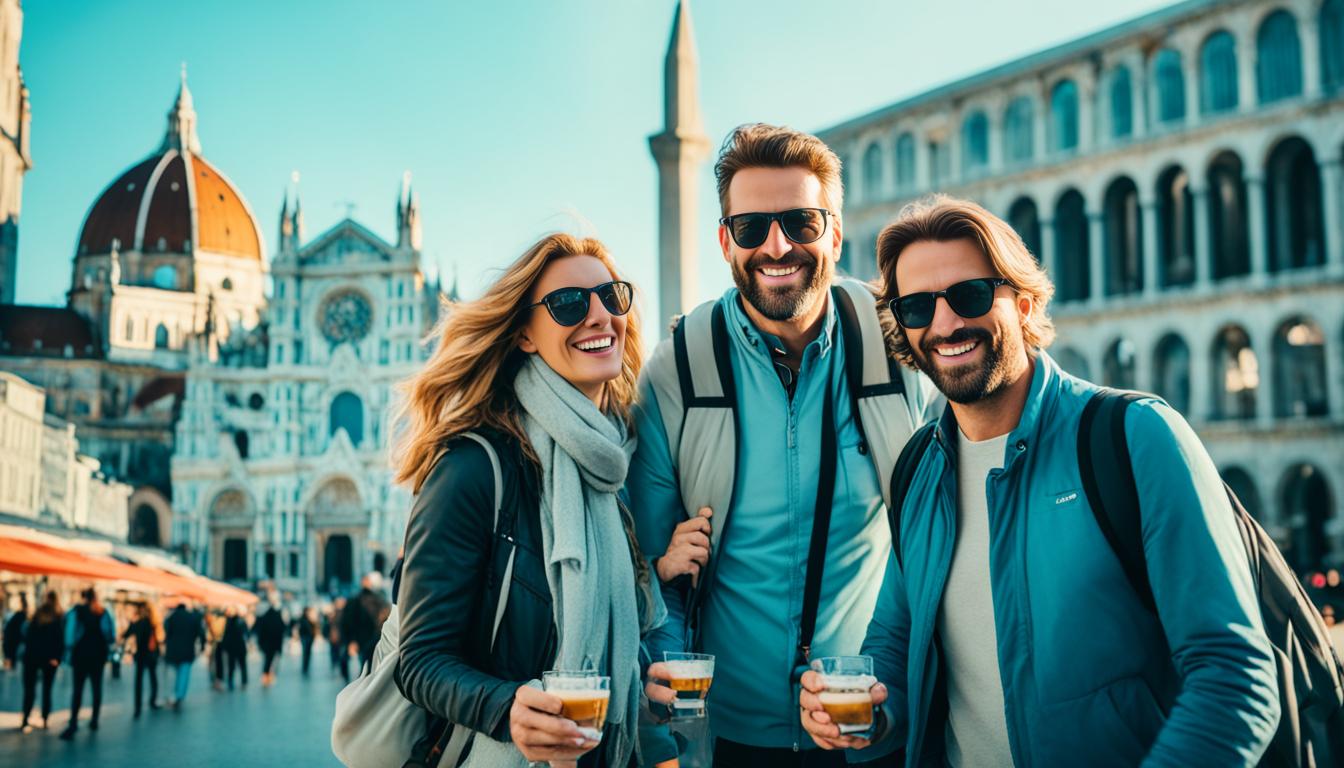Night photography while traveling can be a challenging, yet rewarding, endeavor. Capturing cities and landscapes after dark requires specific techniques and settings to achieve stunning results. In this article, we will provide you with expert tips and tricks to help you master the art of night photography while traveling. Whether you are interested in cityscape photography or capturing the beauty of landscapes at night, we have you covered. With our guidance, you will be able to capture the essence of a city and create breathtaking images that showcase the unique atmosphere of nighttime scenes.
Key Takeaways:
- Cityscape photography tips
- How to photograph landscapes at night
- Capturing night scenes
- Urban photography techniques
- Nighttime photography settings
General Travel Photography Tips for Beginners
As beginner travel photographers, capturing and sharing your travel photos is an exciting journey that allows you to preserve precious memories and showcase your unique perspective. To help you enhance your photography skills and create stunning images, we’ve compiled a list of tips and tricks to guide you on your photography journey.
1. Get to know your camera
First and foremost, take the time to familiarize yourself with your camera and its settings. Understanding how to adjust the aperture, shutter speed, ISO, and other features will empower you to make the most of your equipment and capture the essence of every moment.
2. Learn composition and framing techniques
Composition plays a critical role in photography. Experiment with the rule of thirds, leading lines, and framing to add depth and visual interest to your photos. By thoughtfully arranging the elements within your frame, you can create more impactful and compelling images.
3. Plan your shots in advance
Before embarking on your photography adventures, take the time to research and plan your shots. This includes identifying key landmarks or attractions, scouting for the best lighting conditions, and anticipating the ideal moments to capture iconic scenes. Planning ahead will help you make the most of your time and increase your chances of capturing outstanding travel photos.
4. Find your unique voice
While seeking inspiration from professional travel photographers is valuable, it’s essential to find your unique voice as a photographer. Express your creativity and personal style through your images, capturing not only what you see but also how you feel about the places you visit. Develop your own perspective and let your passion shine through your photographs.
5. Attend photography workshops
Consider participating in photography workshops or courses to expand your knowledge and refine your skills. Expert guidance and hands-on practice can accelerate your learning process, providing valuable insights and techniques specific to travel photography. Attend workshops hosted by professional travel photographers to gain insights from their experiences.
| Tips for Beginner Travel Photographers |
|---|
| Get to know your camera and its settings |
| Learn composition and framing techniques |
| Plan your shots in advance |
| Find your unique voice as a photographer |
| Attend photography workshops |
By following these general travel photography tips for beginners, you’ll gain confidence and improve your skills as you embark on an exciting photography journey. Remember, practice is key, so keep capturing, sharing, and exploring the world through your lens.
Technical Travel Photography Tips
In order to achieve optimal results in night photography while traveling, it is important to understand the technical aspects of photography. By mastering the exposure triangle, which consists of aperture, ISO, and shutter speed, you can gain control over the amount of light that enters your camera, allowing you to create the desired exposure.
Adjusting the aperture allows you to control the depth of field, determining how much of your subject is in focus. A lower aperture value, such as f/1.8, will result in a shallower depth of field, ideal for isolating a specific subject or creating a blurry background. A higher aperture value, like f/16, will produce a greater depth of field, keeping more of the scene in focus.
When it comes to ISO, consider the tradeoff between image quality and noise. A lower ISO setting, such as ISO 100, will produce cleaner images with less noise, but may require longer shutter speeds or larger apertures to compensate for the reduced sensitivity to light. On the other hand, a higher ISO setting, like ISO 1600, can capture more light in darker environments but may introduce more noise.
The shutter speed determines the length of time the camera’s sensor is exposed to light. A longer shutter speed, in seconds or fractions of a second, will result in more light being captured, making it ideal for low-light conditions. However, a longer shutter speed can also introduce motion blur if the camera or subject moves during the exposure. Conversely, a faster shutter speed will freeze motion but may require a wider aperture or higher ISO to achieve a proper exposure.
Using manual mode gives you full control over the camera’s settings, allowing you to actively adjust the aperture, ISO, and shutter speed based on the scene’s lighting conditions. Shooting in RAW format, rather than JPEG, provides more flexibility during post-processing, allowing you to adjust the exposure, white balance, and other parameters without sacrificing image quality.
To become proficient in night photography, it is essential to practice and experiment with different camera settings and techniques. Take the time to familiarize yourself with your camera equipment and its settings. Explore various compositions, perspectives, and lighting conditions to develop your own unique style. And don’t forget to have fun while practicing photography and capturing the beauty of the world around you!
Exposure Triangle Overview
| Element | Description |
|---|---|
| Aperture | The opening of the lens that controls the amount of light entering the camera. Measured in f-stops, with lower values indicating larger apertures and higher values indicating smaller apertures. |
| ISO | The sensitivity of the camera’s sensor to light. Higher ISO settings allow for faster shutter speeds in low-light conditions but can introduce noise in the image. |
| Shutter Speed | The length of time the camera’s sensor is exposed to light. Faster shutter speeds freeze motion but require more light, while slower shutter speeds capture more light but may introduce motion blur. |
Night Photography Tips and Tricks
When it comes to capturing stunning night photos, having the right techniques and tools can make all the difference. In this section, we’ll share some invaluable tips and tricks that will take your night photography to the next level.
1. Use a Tripod for Sharp Images
When shooting in low light conditions, it’s important to keep your camera steady to avoid any blurriness. Using a tripod or finding a stable surface to rest your camera on will ensure sharp and crisp images.
2. Adjust Shutter Speed and ISO
To capture the desired amount of light in your night photos, it’s crucial to experiment with your camera’s shutter speed and ISO settings. Longer shutter speeds allow more light to enter the camera, while adjusting the ISO helps control the camera’s sensitivity to light.
3. Utilize a Fast Lens with Wide Aperture
A fast lens with a wide aperture, such as f/1.8 or lower, is ideal for night photography. This allows more light to enter the camera, resulting in brighter and more detailed images.
4. Shoot in RAW Format
Shooting in RAW format gives you greater flexibility during post-processing. RAW files preserve more image data, allowing for adjustments to exposure, white balance, and other settings without sacrificing image quality.
5. Take Advantage of a Remote Trigger
A remote trigger enables you to trigger the camera shutter without touching it, minimizing any movement that could potentially result in camera shake. This ensures sharper images, especially during longer exposures.
6. Back Up Your Photos
Don’t forget to back up your photos to prevent the loss of any precious moments. Whether it’s saving them on an external hard drive or uploading them to a cloud storage service, having a backup ensures your photos are safe and secure.
| Tips | Benefits |
|---|---|
| Use a tripod | Prevents camera shake for sharp images |
| Adjust shutter speed and ISO | Control the amount of light entering the camera |
| Utilize a fast lens with wide aperture | Capture brighter and more detailed images |
| Shoot in RAW format | Greater flexibility during post-processing |
| Take advantage of a remote trigger | Minimize camera shake for sharper images |
| Back up your photos | Prevent loss of precious moments |

With these tips and tricks, you’ll be well-equipped to tackle night photography with confidence. Remember to experiment, practice, and have fun capturing the beauty of the night. Stay tuned for the next section where we explore different types of night photography.
Different Types of Night Photography
Night photography opens up a world of creative possibilities, allowing you to explore various genres and capture captivating images. Here are some different types of night photography that you can try:
Night Portraits
Capturing night portraits involves playing with alternative light sources to create stunning and dramatic effects. Use streetlights, lanterns, or even handheld flashlights to illuminate your subject and experiment with silhouettes. The contrast between light and shadow can add depth and intrigue to your portraits.
Astrophotography
Astrophotography offers a unique opportunity to capture the beauty of the night sky. Shoot the stars, constellations, or even the Milky Way to create mesmerizing images. To get the best results, use a tripod to keep your camera steady and a wide-angle lens to capture the expansive night sky.
Night Cityscape Photography
Explore the vibrant and colorful atmosphere of cities at night through night cityscape photography. Capture the city skyline, buildings adorned with neon lights, and bustling streets to showcase the energy and liveliness of urban environments after dark. Experiment with long exposures to capture light trails from passing cars or pedestrians.
Street Photography at Night
Street photography at night allows you to document the unique moments and interactions that unfold in urban environments after dusk. Embrace the contrast between artificial lighting and dark shadows to capture the essence of the city’s nightlife. Candid shots of people, street performers, or intriguing architecture can make for compelling night street photography.
Landscape Photography
Landscape photography at night presents a challenge but can be immensely rewarding. Seek out landscapes that are illuminated by a single light source, such as the moon or stars. Use long exposures to add a sense of tranquility and reveal details that are often hidden in the darkness. Experiment with different compositions and embrace the surreal beauty of nighttime landscapes.
Light Painting
Light painting is a creative technique that involves using handheld light sources to paint with light during long exposures. By moving a flashlight or other light source in front of your camera, you can create unique patterns, shapes, and textures. Let your imagination run wild and experiment with different light painting techniques to add an artistic touch to your night photography.
Neon Signs
Neon signs offer a colorful and vibrant element to incorporate into your night photography. Seek out neon-lit signs in urban areas or landmark locations and use them as focal points in your compositions. Experiment with different angles, exposures, and perspectives to capture the retro charm and glowing allure of neon signs.
| Type of Night Photography | Description |
|---|---|
| Night Portraits | Capturing dramatic portraits at night using alternative light sources and exploring silhouettes. |
| Astrophotography | Shooting the stars, constellations, or the Milky Way to create mesmerizing images of the night sky. |
| Night Cityscape Photography | Showcasing the vibrant and colorful atmosphere of cities at night by capturing urban landscapes and neon lights. |
| Street Photography at Night | Capturing the energy and liveliness of urban environments after dark, documenting candid moments and interactions. |
| Landscape Photography | Challenging yet rewarding, photographing landscapes illuminated by a single light source like the moon. |
| Light Painting | Using handheld light sources to paint with light during long exposures, creating unique patterns and textures. |
| Neon Signs | Incorporating the colorful and glowing allure of neon signs in your night photography compositions. |
Explore these different types of night photography to expand your creative horizons and capture captivating images after dark.
Tips for Shooting Night Photography
Shooting night photography can be both challenging and rewarding, especially when faced with low light conditions. To capture stunning nighttime images, it’s essential to master specific techniques and settings. Here are some tips to help you achieve the best results:
- Adjust the shutter speed, ISO, and aperture: These three settings play a crucial role in achieving the desired exposure in low light situations. Experiment with different combinations to find the perfect balance for your shot.
- Get creative with flash: Flash can be a powerful tool in night photography. Try combining it with slow shutter speeds to capture intriguing effects, such as light trails or freezing motion in a dark scene.
- Ensure camera stabilization: Stability is essential for sharp images, especially in low light conditions where longer shutter speeds are often required. Use a tripod or find stable surfaces to rest your camera on for steady shots.
- Shoot in RAW format: RAW files retain more information and provide greater flexibility in post-processing. This allows you to make adjustments to exposure, white balance, and other settings without sacrificing image quality.
- Know your camera: Familiarize yourself with your camera’s settings and functions to quickly adjust to changing conditions. This knowledge will help you make the necessary adjustments on the fly to capture the perfect shot.
- Experiment with different settings and techniques: Don’t be afraid to step out of your comfort zone and try new things. Play around with different exposure settings, focal lengths, and compositions to discover your unique style in night photography.
By following these tips and techniques, you’ll be well-equipped to navigate the challenges of shooting night photography and capture stunning images in low light conditions.

Experimenting with settings, pushing the boundaries of your camera, and embracing the creative possibilities of night photography will allow you to capture extraordinary moments that showcase the beauty and intrigue of the nocturnal world.
Conclusion
Night photography while traveling presents a unique opportunity to capture the beauty and atmosphere of cities and landscapes after dark. By following the tips and tricks outlined in this article, you will be able to improve your night photography skills and create stunning images that showcase your travel experiences.
Remember to experiment, practice, and have fun with your night photography adventures. With time and dedication, you will develop your own unique style and capture the essence of each destination you visit.
So grab your camera, explore the world at night, and let your creativity shine through your photographs.
FAQ
What is night photography while traveling?
Night photography while traveling involves capturing cityscapes and landscapes after dark to showcase the unique atmosphere and beauty of nighttime scenes.
What are some general travel photography tips for beginners?
Some general travel photography tips for beginners include getting to know your camera and its settings, learning about composition and framing techniques, planning your shots in advance, and finding your unique voice as a photographer.
What are some technical travel photography tips?
Some technical travel photography tips include mastering the exposure triangle (aperture, ISO, and shutter speed), shooting in manual mode and in RAW format, and practicing with different camera settings and techniques.
What are some night photography tips and tricks?
Some night photography tips and tricks include using a tripod or stable surface, shooting in manual mode and adjusting shutter speed and ISO settings, using a fast lens with a wide aperture, shooting in RAW format, and backing up your photos.
What are the different types of night photography?
The different types of night photography include night portraits, astrophotography, night cityscape photography, street photography at night, landscape photography, light painting, and capturing neon signs.
What are some tips for shooting night photography?
Some tips for shooting night photography include adjusting shutter speed, ISO, and aperture settings, creative use of flash, camera stabilization, shooting in RAW format, knowing your camera and its settings, and experimenting with different techniques and settings.




